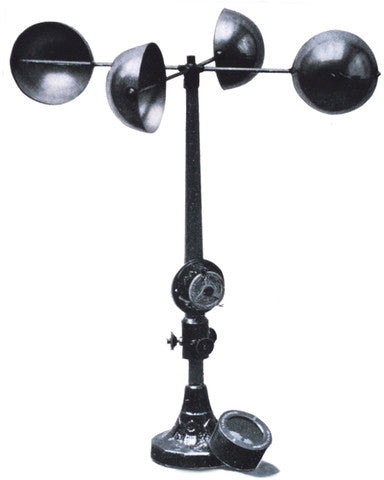History of the Anemometer
It should come as no surprise that the modern day anemometer is in fact an ancient invention.
Originally deriving from the Greek word for wind – anemos – an anemometer is used for measuring wind speed. Surprisingly, it’s changed very little from its designs in the 15th century! Yes, it still uses the mechanical movement of something, measures the rate of movement and then presents that information to those interested. Credit should be given to Leon Alberti who is said to have invented the original mechanical anemometer in 1450.
Following on the footsteps of that original invention, numerous others developed their own versions of the anemometer, with some of them mistakenly being credited with its invention. These include Robert Hooke or the Mayans. Yet others gave credit to Wolfius in 1709.
In 1846, John Robinson improved on the design by using four hemispherical cups set to rotate on a horizontal axis, then turning mechanic wheels (a bit like a watch or mechanical speedometer on cars of yesteryear).
John Patterson came up with an idea and designed a three cup anemometer in 1926 then improved in 1935 by Brevoort and Joiner. Their enhancements included changing the number of cups and the cup design itself so as to reduce error greatly.
It wasn’t until 1991 that Derek Weston updated the previously wind-speed-only anemometer to include wind direction. By adjusting one cup, speed variations occurred whenever the tag was facing into, or away from, the wind. This unique approach resulted in a design that gave both speed and direction information without substantially changing the design.
Modern advancements in anemometer engineering include the sonic anemometer. It works by measuring sound waves which travel between paired transducers. The sound waves speeding or slowing is an indication of the wind velocity, and is measured almost instantly. The sonic anemometer was developed by Dr. Andrews Pflitsch in 1994.
Other advanced anemometers include the hot-wire, whereby a heated fine wire is cooled by the wind and that cooling effect indicates wind speed. Recently, the laser Doppler anemometer was developed and sees a laser light beam split in two, with only one of them exposed to the wind and then the two compared for deviations.
作出评论
评论将在核准后显示。






